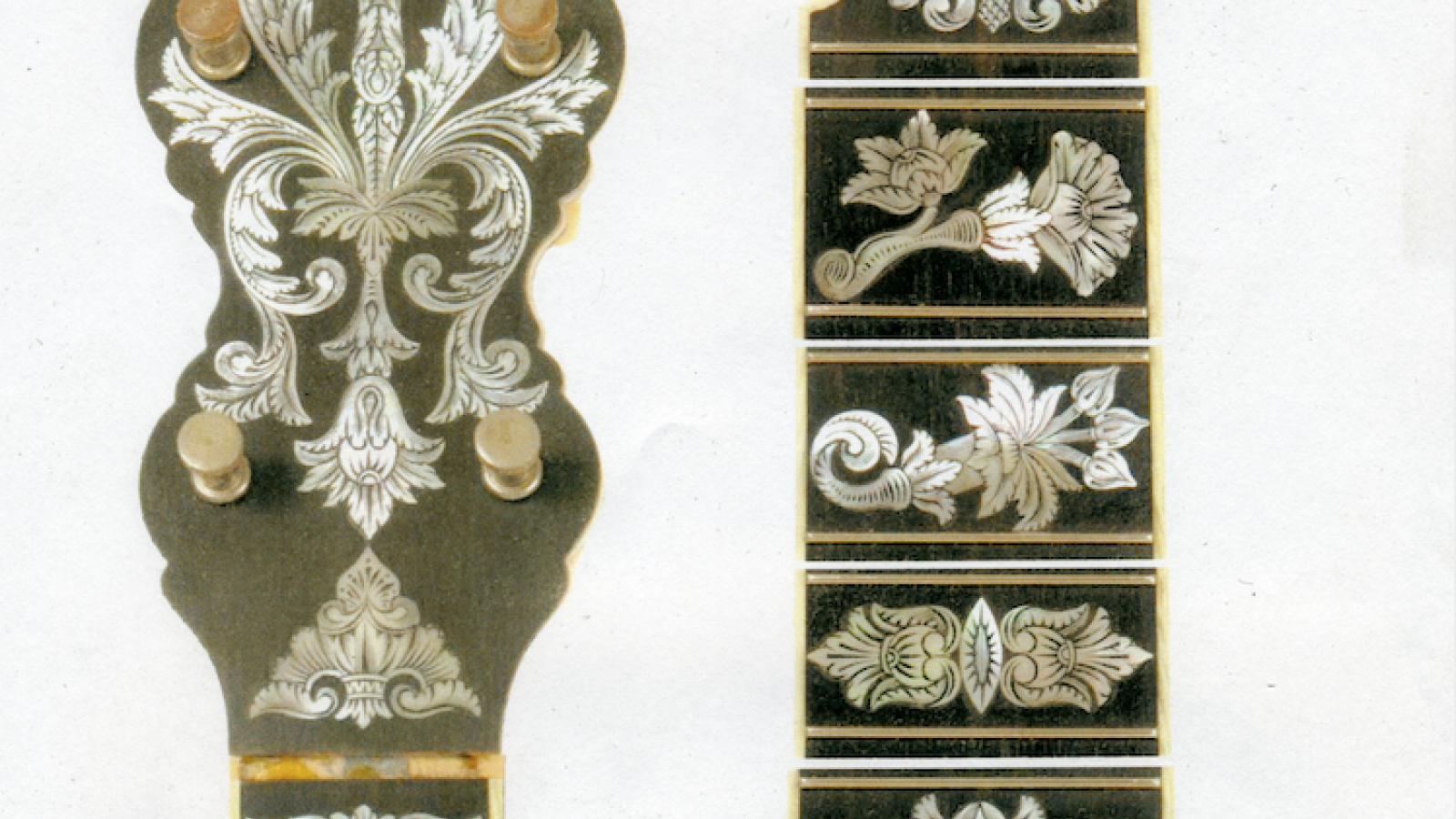"The Golden Age of the banjo. Um, 1890 to about 1910, and they incorporated both classical ornamentation and contemporary design which was art Nuevo and they were kind of an interesting mixture of folk images and classic images and very decorative, very beautiful. The banjo had a great tradition for decoration and almost anything went. And in the Victorian Era when the… when the wealthy people discovered the banjo, they could afford the fancy banjo’s which was carving and pearl work. Nothing to do with sound, it had everything to do with… with beauty. So I was enamored with those and… and I’ve restored many, many great American banjos. Almost all of the really great banjo’s in this country I think have been in this room."
A self-taught banjo player and instrument maker, Doug Unger started playing the banjo after a friend gave him the intrument. Soon after, he taught himself how to construct a banjo without any expert help, relying only on his artistic instinct and photos of old banjos. As a master craftsman, Unger's banjos are known for elaborate, decorative pearl inlays. Unger hand crafts every banjo, engraving the neck with delicate skill and precision. His work is known internationally, as few people have his instrument-making talents. He has sold instruments to people in at least seven different countries.
Unger graduated with a Bachelor of Fine Arts from Cleaveland Institute of the Arts and later received a Master's degree from Syracuse University. He is now a Professor Emeritus at Kent State University, where he taught Fine Art for 35 years. He is also a watercolorist painter who enjoys painting country landscapes. With his many artistic talents, Unger considers himself both a fine art painter and a traditional craftsperson. He is especially drawn to music because of its communal atmosphere and engagement with the real world. To this end, he has worked with the Ohio Arts Council's Traditional Arts Apprenticeship program. One of his apprentices, Bob Anderson, has become a full-time banjo maker in North Carolina. Another, Kevin Enoch, designs banjos for clawhammer playing. Unger has continued to mentor young musicians and craftspeople over the years, both inside and outside the apprenticeship program. He is most passionate about sharing his traditional artwork with younger generations so that the craft will live on.
Doug Unger's Traditions episode
Contents of the Collection
- Unger segment "The Beauty of the Music" for Our Ohio
- Images of young Unger posing with rabbits
- Images of engravings on the headstock of banjo's made by Unger
- Original paintings by Unger depicting a barn, a farmhouse, and a woman
- Live Unger performances
- Video of Unger making a banjo, including sketching and cutting the design on banjo inlay



